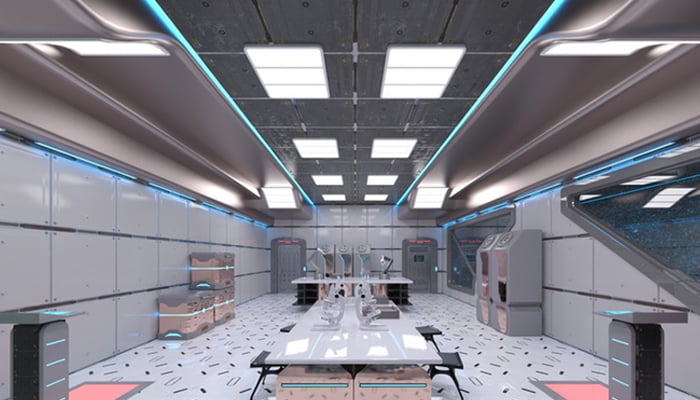The Future of Classroom Design: Smart Classrooms and Flexible Spaces

Classrooms are evolving. We teenagers are from that golden time when we say ‘Yea, I was in class that had these long desks and a big blackboard. Education as we know it is evolving and the spaces where learning takes place as well. Technology, adaptability and learners as well as their needs are the keywords for future classrooms.
Smart classrooms and flexible spaces are not fads. They are what is in store for education. All these designs satisfy the contemporary student requirements regarding design, flexibility, imagination, communication, and critical thinking. A similar question can be posed here and that is what are smart classrooms? And where does all of this leave flexible spaces? It is possible to provide the following definitions of these concepts: philosophical anthropology, philosophical culture, and philosophical worldview.
What Is a Smart Classroom?

A smart classroom is a learning environment where the advancement in technology is integrated to support the teaching learning process. Some of the examples of APCR include; interactive whiteboards, tablets, digital textbooks, and virtual reality. But it is not restricted to mere gizmos. It is more or less about ensuring that edtech aligns with goals of the educational process.
Key Features of Smart Classrooms:
Interactive Whiteboards: Instead of conventional black/white/coloured boards, these enable the teacher to share videos, diagrams, and other content with his/her class.
Tablets and Laptops: Students can get information, record, and interact with other students with the help of personal devices.
Virtual Reality: Through the assistance of VR students can go on virtual tours and learn and experience history within a classroom or behind the seas.
Digital Textbooks: No more toting of heavy loads in our back. Technological textbooks can be easily carried around, involve more use of the students’ interactions and can be retrieved and amended on the internet.
These tools enhance learning to make it more fun and closely related to individual learners. The use of tutorials allows students to learn at their own pace, get easy access to resources and engage in a number of sessions involving a number of activities. Such an approach to the use of technology is enhancing the connection between traditional methods of teaching and learning, and current demands.
The Role of Flexible Spaces in Modern Education

Portable furniture and easily movable walls are the main characteristics of flexible spaces which in learning context refers to a classroom that can be easily changed in order to suit the required use. There are accommodations for traditional desks and chairs but flexibility of space implies changes of positions. Such flexibility is important in the modern education where individuals have to collaborate as well as think outside the box.
Benefits of Flexible Spaces:
- Collaboration: Students can work in groups or pairs, encouraging teamwork and communication.
- Creativity: With movable furniture, students can create different setups that inspire creativity and innovation.
- Adaptability: Teachers can change the layout to fit different teaching methods, whether it’s a lecture, group work, or hands-on activity.
- Comfort: Flexible spaces often include comfortable seating, like bean bags or lounge chairs, making the classroom a more inviting place.
The Intersection of Technology and Flexibility

Smart technology and flexibility of spaces when used together make up a formidable learning system. Technology gives the tools and the spaces give the environment in which this is all featured. Together, they make a class modern as well as efficient to teach and to be taught in.
How They Work Together:
- Interactive Lessons:
By the use of smart technology in classroom, it becomes easier to deliver lessons that are so interesting to teach as well as captivating to the students. Flexible spaces can be used by students to participate in such lessons following their mode of learning.
- Personalized Learning:
Flexible spaces support personalized learning paths since students can work in various areas that suit them as advanced technology curves personalized learning paths.
- Real-World Skills:
So, on the one hand, smart classrooms, on the other hand, flexible spaces let students develop essential skills for the future. This environment encourages collaboration, creativity, as well as, critical thinking abilities.
When these elements are successfully incorporated the teacher will effectively help to develop a more interesting learning environment and at the same time present the students with skills to function in the future world.
Challenges and Considerations

However, as with any broad field, there are some difficulties associated with the development of classroom of the future. Smart technology and smart spaces mean change and a certain level of investment, training and new ways of thinking. Schools have to use the expense, the question of training teachers, and the chances of technology being a disruption.
Key Challenges:
Cost: As a note, the utilization of technology and flexibility in furniture may cost much. Schools have to learn how to get involved with this training without jeopardizing other kinds of training.
Training: Caretakers have to learn to incorporate new technologies and function in heterogeneous spaces as they emerge.
Distraction: Technology can be a boon or bane for a business. Although it can contribute to teaching and learning, it may also turn into a distraction factor if good control is not observed.
Equity: A problem that is realized with this kind of learning is the inequitable distribution of technological input in the homes of the students.
Conclusion

As we look to the future, it’s clear that the traditional classroom is evolving. Smart classrooms and flexible spaces are not just trends. They are the future of education. And that future is bright, engaging, and student-centered.
By making these changes, educators can help students succeed in a rapidly changing world. The future of education is here, and it’s happening in smart classrooms and flexible spaces.






